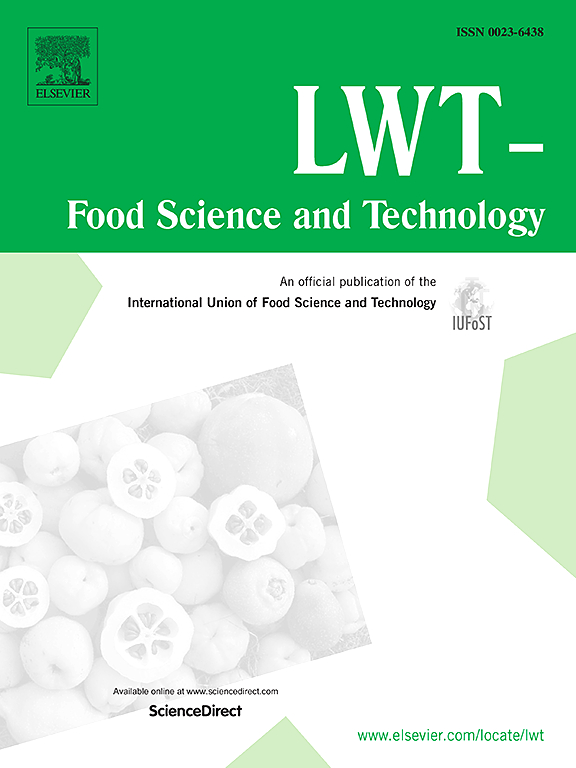Optimization of calcium lactate-ultrasound-ginger extract combined treatment conditions for pork tenderization and its tenderization mechanism
IF 6
1区 农林科学
Q1 FOOD SCIENCE & TECHNOLOGY
引用次数: 0
Abstract
Tenderness is a key quality attribute that significantly influences consumer satisfaction with meat. However, traditional and single tenderization methods present certain limitations in current meat production industry. This study aimed to investigate the combined effects of ginger extract, ultrasound, and calcium lactate on the tenderness of pork and to explore the underlying tenderization mechanism. The optimal condition for combined treatment was 7 g/100 mL ginger extract, 0.03 g/mL calcium lactate and 30 min of ultrasound treatment. Under these conditions, compared to untreated pork, the shear force of tenderized pork decreased by 50.2 %, the myofibrillar fragmentation index increased by 38.0 %, and water holding capacity improved. Significant muscle fiber damage was observed, with clear gaps between the fibers. Notable muscle fiber damage was observed, with significant gaps between fibers. Sodium dodecyl sulfate polyacrylamide gel electrophoresis analysis revealed the degradation of high molecular proteins into lower molecular fragments in the tenderized pork. Further characterization of secondary structure of myofibrillar proteins revealed that the proteins underwent unwinding, unfolding, and stretching during treatment. These findings suggest that the combined treatment disrupted the integrity of muscle fibers and altered the spatial structure of myofibrillar proteins, leading to lower molecular and a more loosened structure. Therefore, the combination of ginger extract with calcium lactate and ultrasound treatment holds significant potential for improving meat quality.

求助全文
约1分钟内获得全文
求助全文
来源期刊

LWT - Food Science and Technology
工程技术-食品科技
CiteScore
11.80
自引率
6.70%
发文量
1724
审稿时长
65 days
期刊介绍:
LWT - Food Science and Technology is an international journal that publishes innovative papers in the fields of food chemistry, biochemistry, microbiology, technology and nutrition. The work described should be innovative either in the approach or in the methods used. The significance of the results either for the science community or for the food industry must also be specified. Contributions written in English are welcomed in the form of review articles, short reviews, research papers, and research notes. Papers featuring animal trials and cell cultures are outside the scope of the journal and will not be considered for publication.
 求助内容:
求助内容: 应助结果提醒方式:
应助结果提醒方式:


